You can rent a scope in some areas but it's likely to be expensive.
It would be nice to confirm that the signal is good up to the op-amp but that's going to be difficult without a scope.
Since the outputs failed, you can assume that the problem is beyond the op-amp.
These are simple amplifiers so troubleshooting the audio section isn't usually difficult or time consuming. The power amplifier section of the amp begins with the op-amp nearest the outputs. The output of the op-amp goes to the 4 diodes connected in series.
The drive signal goes from the diodes to two small transistors (MPSA06/56 or MPSU07/57). For clarity, let's call them pre-drivers. These transistors typically have their emitter connected to shield/secondary ground via a low value resistor (less than 300 ohms). The collector is connected to the base of another small transistor. Let's call these the drivers.
The collector of the drivers is connected to the collector of the output transistors which is also the output of the amplifier. The emitter of the driver is conected to the base of the output transistors via a low value resistor.
The signal path is roughly ... op-amp >> 2.7 ohm resistor >> diodes >> predrivers >> drivers >> output transistors >> speaker leads.
I'm not sure if this will work but you can try it. To troubleshoot a grossly distorted signal (1/2 of the waveform completely missing), you need to determine which half is missing. Since you don't have a scope, try this. Connect a load to the amplifier's speaker terminals of the defective channel. Since it plays, I'll assume that there is no DC on the speaker leads. Touch the black lead of you meter (set to DC volts) to the shield ground of the RCA jacks. drive a signal into the amp. Does the meter read a positive or negative voltage. If the voltage is positive, you would assume that the negative half of the waveform is not being produced and you would investigate the circuit driving the negative half of the waveform. This would be a PNP transistor (connected to the diodes) then the NPN transistor (connected to the base of the outputs) and then the outputs. If the voltage goes negative when the signal is driven into the amp, you'd investigate the half of the channel responsible for producing the positive half of the waveform.
The low value resistors often fail and you should check all of them in the defective channel.
It would be nice to confirm that the signal is good up to the op-amp but that's going to be difficult without a scope.
Since the outputs failed, you can assume that the problem is beyond the op-amp.
These are simple amplifiers so troubleshooting the audio section isn't usually difficult or time consuming. The power amplifier section of the amp begins with the op-amp nearest the outputs. The output of the op-amp goes to the 4 diodes connected in series.
The drive signal goes from the diodes to two small transistors (MPSA06/56 or MPSU07/57). For clarity, let's call them pre-drivers. These transistors typically have their emitter connected to shield/secondary ground via a low value resistor (less than 300 ohms). The collector is connected to the base of another small transistor. Let's call these the drivers.
The collector of the drivers is connected to the collector of the output transistors which is also the output of the amplifier. The emitter of the driver is conected to the base of the output transistors via a low value resistor.
The signal path is roughly ... op-amp >> 2.7 ohm resistor >> diodes >> predrivers >> drivers >> output transistors >> speaker leads.
I'm not sure if this will work but you can try it. To troubleshoot a grossly distorted signal (1/2 of the waveform completely missing), you need to determine which half is missing. Since you don't have a scope, try this. Connect a load to the amplifier's speaker terminals of the defective channel. Since it plays, I'll assume that there is no DC on the speaker leads. Touch the black lead of you meter (set to DC volts) to the shield ground of the RCA jacks. drive a signal into the amp. Does the meter read a positive or negative voltage. If the voltage is positive, you would assume that the negative half of the waveform is not being produced and you would investigate the circuit driving the negative half of the waveform. This would be a PNP transistor (connected to the diodes) then the NPN transistor (connected to the base of the outputs) and then the outputs. If the voltage goes negative when the signal is driven into the amp, you'd investigate the half of the channel responsible for producing the positive half of the waveform.
The low value resistors often fail and you should check all of them in the defective channel.
Did the other channel (that was working fine before you replaced that cap) only start having this distortion with that cap replaced? Take it back out and see. You may have a little solder bridge somewhere near that capacitor causing the distortion.
If you get your hands on a scope you can trace the input signal from the RCA connectors on back into the circuit board to the opamps and try to find where the signal starts getting distorted.
BTW: What is the low impedance rating of a HCCA 250r model? I believe it is .5 ohms, but not for sure. It's big, long and red in color. Not the 250HCCA model, but the 250R HCCA model (newer, but not newest series of Orion, probably second generation).
If you get your hands on a scope you can trace the input signal from the RCA connectors on back into the circuit board to the opamps and try to find where the signal starts getting distorted.
BTW: What is the low impedance rating of a HCCA 250r model? I believe it is .5 ohms, but not for sure. It's big, long and red in color. Not the 250HCCA model, but the 250R HCCA model (newer, but not newest series of Orion, probably second generation).
One channel worked fine and one channel didn't play hardly at all.I replaced both caps at the rca inputs and the channel that worked fine before still did.The channel that was very low now has solid volume.Its just distorted.So nothing got worse with the addition of the new cap.I'm one step closer to getting this hog working I just need to get my hands on an O-scope and trace down the source of distortion.
I was looking for a 225HCCA thread but didn't find any......this might do. 
I have a blown 225HCCA amp with all ten IRFZ44 fets blown (shorted gate to drain) and the output devices seem to be ok.
the silpad has already fallen apart because of old age....I was thinking of mounting the transistors directly on the heatsink with grease since the heatsink is anodized but probably will get some mica insulators.
now, the problem.... the resistor that connects both totem pole drivers to ground (from MPSA56 collector to ground) is burned. I need the value for those resistors.
thanks for any help!
I have a blown 225HCCA amp with all ten IRFZ44 fets blown (shorted gate to drain) and the output devices seem to be ok.
the silpad has already fallen apart because of old age....I was thinking of mounting the transistors directly on the heatsink with grease since the heatsink is anodized but probably will get some mica insulators.
now, the problem.... the resistor that connects both totem pole drivers to ground (from MPSA56 collector to ground) is burned. I need the value for those resistors.
thanks for any help!
i just hooked this amp up again for the first time in a long time and although that one channel is distorted it isn't as distorted as I originally made it out to be.Actually it sounds like the distortion mainly falls into the bass range.Would this indicate a particular component or components that cause this type of distortion?
If you have a sine wave generator that will go down to 5hz or so, you may be able to tell if the amp is producing both halves of the waveform. The frequency response of the amp will be down at that frequency but the amp should still produce enough of it for you to tell if it's moving the speaker equally in and out from the point of rest.
Picked up this old dog today and played around with it.I had purchased some caps a while back to use in it and I was bored so I replaced those ( 3- 10 microfarad 35 volt caps,2- 3300 microfarad 16 volts caps,and 2- 470 microfarad 25 volt caps) as well as touched up some spotty looking solder points.For the hell of it I figured I'd try moving the transistors in the output section onto a different solder pad to see if it made a difference in the output. I'm not really sure what I did but today was the first time i've ever heard this amp play cleanly from both channels. The 10 microfarad caps were in the output section the 470's were right next to the rail caps and the 3300s were power input caps.If it was the movement of the transistors in the outputs that solved the problem would this indicate that the resistors connected to the transistor were bad or out of tolerance?
I misread the header. I was looking at the 2150SX. It appears that the GX did use 0.1 ohm resistors.
Mouser has these:
71-RS02BR1000FE12
They are 3 watt resistors.
http://www.vishay.com/docs/30204/rsns.pdf
Check the dimensions before ordering.
I like to use tight tolerance resistors. These are 1% components. I've never found 1% components that matched the originals. These are black. If you're concerned about the color, you'll need to use a different resistor.
Mouser has these:
71-RS02BR1000FE12
They are 3 watt resistors.
http://www.vishay.com/docs/30204/rsns.pdf
Check the dimensions before ordering.
I like to use tight tolerance resistors. These are 1% components. I've never found 1% components that matched the originals. These are black. If you're concerned about the color, you'll need to use a different resistor.
sorry to bring up an old thread but I have an update. As of about a week ago I got everything soldered back into this amp and I'm happy to say that she appears to be working flawlessly. Due to my own stupidity/lack of knowledge when I first started working on this amp about 3 years ago I ended up toasting most of the power supply and output transistors.I've replaced every output and power supply transistor,the mpsu 07/57'S, all electrolytics,and all tantalum caps. All in all it was a real pain getting this thing going but I learned a lot of valuable lessons about amplifier repair. I learned the hard way on some of it but sometimes that is better I think. It makes it easier to remember because I know I never wanna make some of those mistakes again. Anyways I just wanted to chime in and thank everybody for their help on this amp. I have a few pics of the amp as it sits now with the endcaps and bottom plates I fabbed up for it as I never had the originals.
rough start of the end caps :
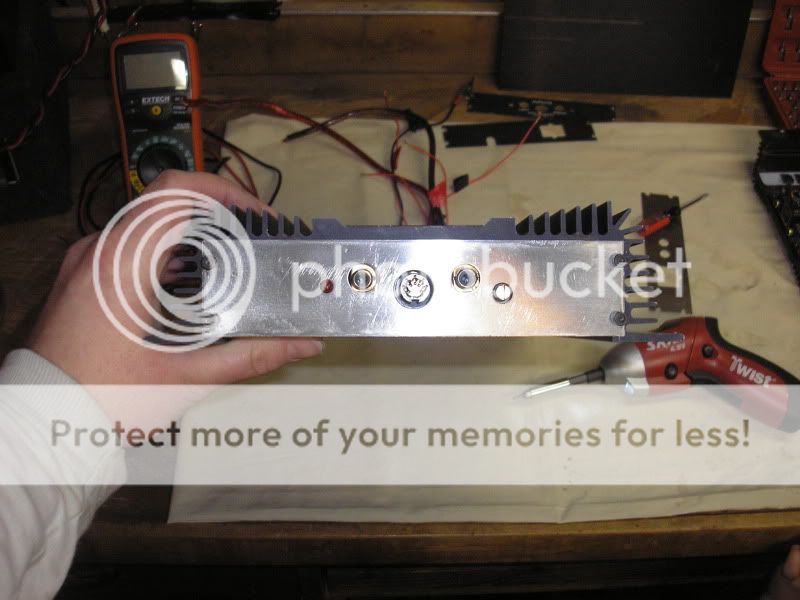
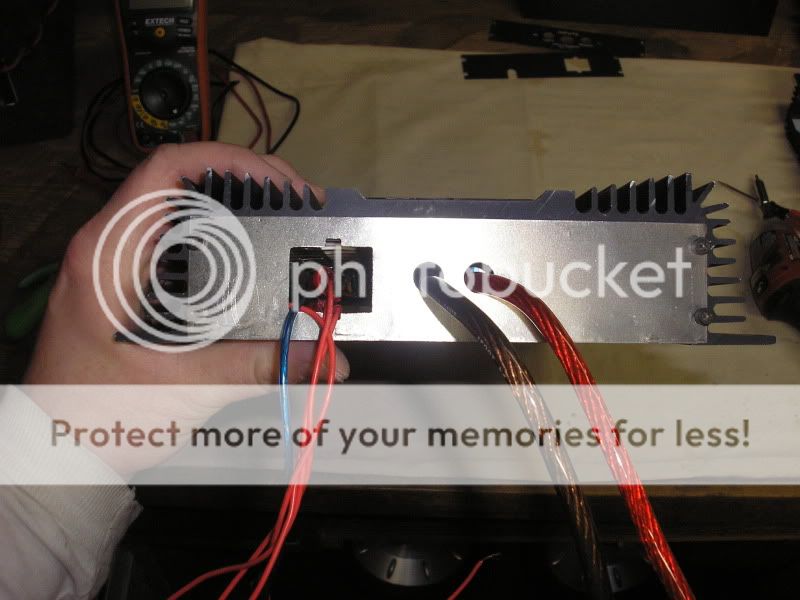
finished up minus some white lettering and original colored wiring that I have yet to source:
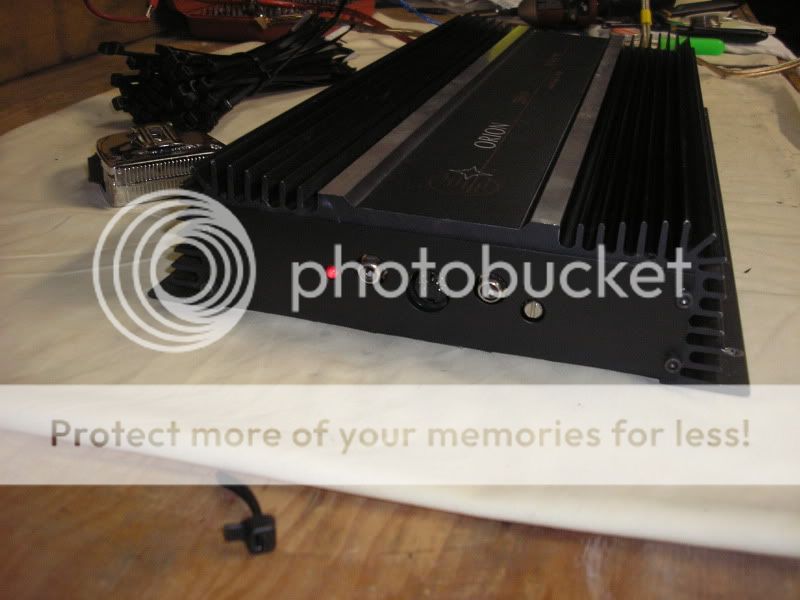
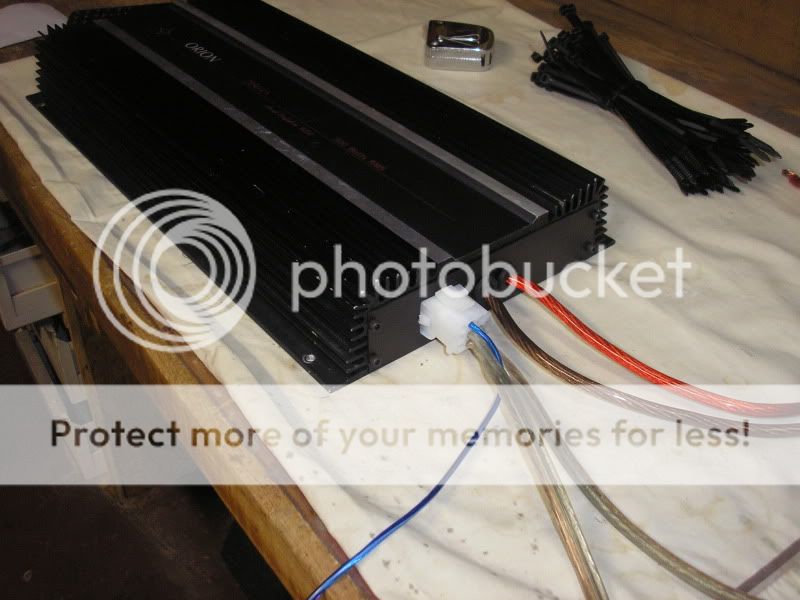

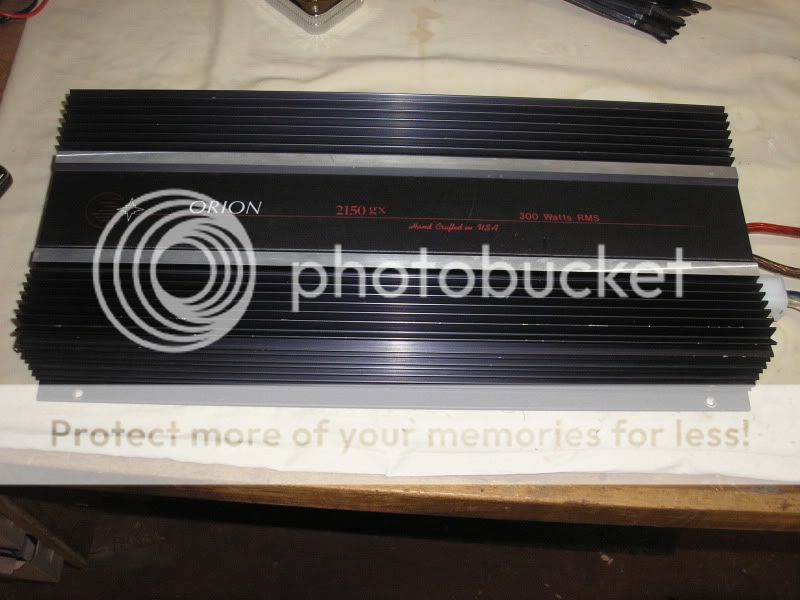
shot of the internals:
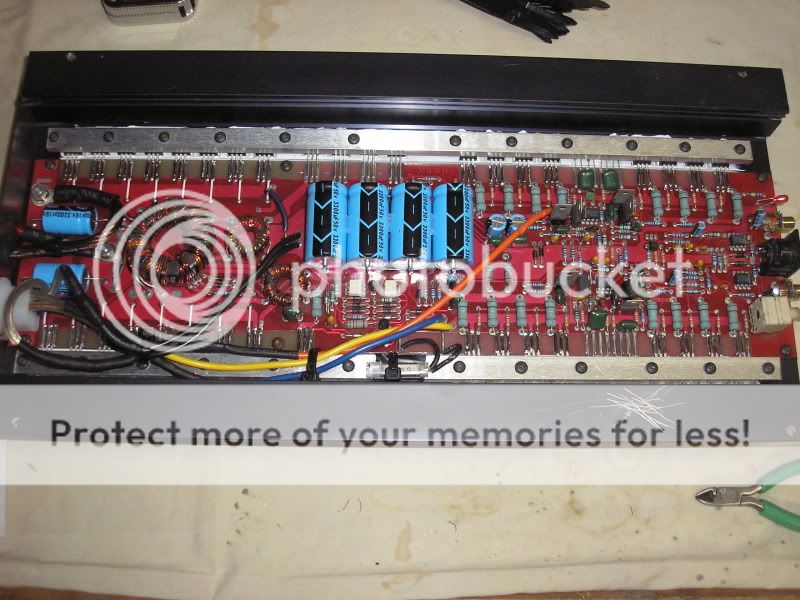
rough start of the end caps :


finished up minus some white lettering and original colored wiring that I have yet to source:




shot of the internals:

Last edited:
I got lucky and got exactly four of the MPSU07's from somebody on here. They offered them in this thread so if you look back through it you might be able to find who I got them from and see if they had some more. As for the MPSU57's I actually sourced those from some website which I can't seem to remember the name of. They weren't originals however they were the Central Semi version (CEN-U57 is the number I believe). I still have six of those if you want them. These are not easy parts to find unless you wanna go on ebay and pay 7 bucks a piece for them. Just let me know if you want the CEN-U57's. I don't see myself working on another one of these anytime soon.
- Status
- Not open for further replies.
- Home
- General Interest
- Car Audio
- Old School Orion 2150 gx.I must repair this amp